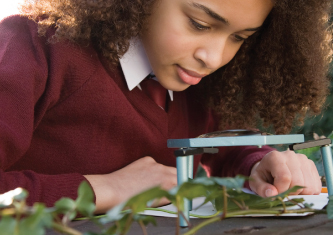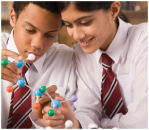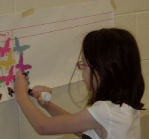 |
|
 |

Integrating Science Across the Curriculum What do a year-long study of natural disasters, a butterfly garden with art mosaics of the ecosystems in your region, a robotics competition, and a health and nutrition fair have in common? All are great projects to integrate science across the curriculum in afterschool. Integrating Science Across the Curriculum is one of the promising practices in the science section of the Afterschool Training Toolkit, produced by the National Center for Quality Afterschool. The key goal of Integrating Science Across the Curriculum practice is to reinforce skills in other subject areas by engaging students in science investigations. For example, science projects that include reading build science knowledge while strengthening literacy skills. Start small. You don’t have to create a yearlong activity to show students how math and science, or science and language arts, are related. You can use measurement and counting skills to collect and analyze data, graph and express scientific relationships, or use scientific terms in vocabulary lessons. Over time you can incorporate these smaller lessons into a larger project. Use day-school teachers as resources. Find out what students are studying and use that focus to create an interdisciplinary activity that incorporates more than one subject and related standards. Incorporate skills from other disciplines. Pique students’ interest in science by designing projects that allow students to use skills from other disciplines. Students may find that their interest in reading, for example, leads them to read more on science topics. Make it fun. Afterschool offers wonderful opportunities to show students how science can be fun. Build a robot, make a mosaic, or erupt a volcano. All these projects can engage students in a way that might not be possible in day-school. Integrating science across the curriculum works because students are engaged in their own learning. They use what they already know and construct new understandings. Students are also able to use different strategies, approaches, and learning styles; and they learn in a social context. The learning is not isolated, but rather it is a part of a whole.
|
The SEDL National Center for Quality Afterschool helps state education agencies and local practitioners develop high-quality programs for academic enrichment as well as youth development activities. |

| 
THE CONSUMERíS GUIDE TO AFTERSCHOOL This free resource contains reviews of high-quality, hands-on science content for afterschool programs. It has been updated recently to include reviews of 15 additional curricula, including reviews of materials for afterschool leaders seeking information about offering science activities in their afterschool programs.
|

|
Delaware City Schools Schultz SACC (School Age Child Care)
|
 |
 |
 |
||||
|
|
Safety First |
|
||||
This e-mail was sent by: Editor: Laura Shankland
|
You are welcome to reproduce issues of AfterWords and distribute copies at no cost to recipients. Please credit SEDL as publisher. Link to PDF versions of AfterWords is available here. For additional uses, please fill out and submit a copyright request form. Copyright © 2009 by SEDL. |


